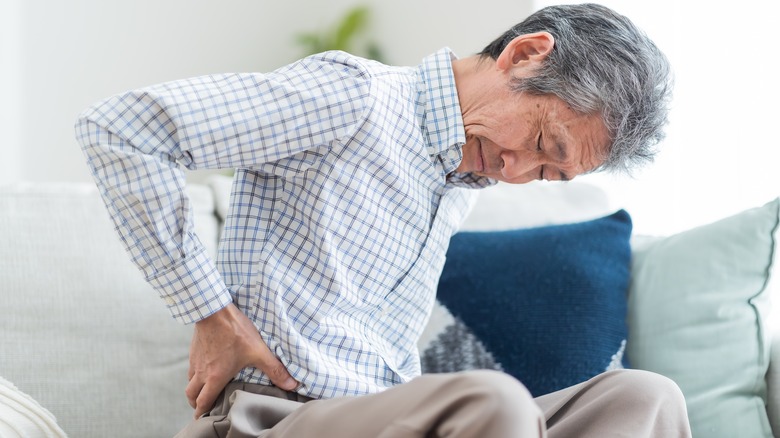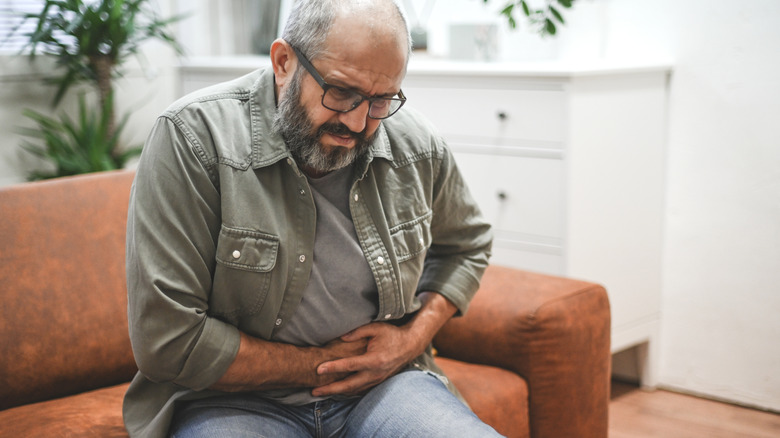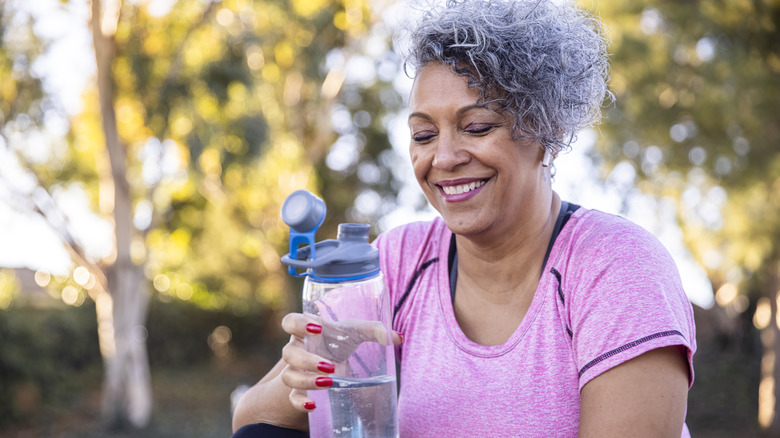Signs Your Back Pain Is Actually A Kidney Stone
Kidney stones affect a growing number of people each year. In the approximately 30 years between the late 1970s and the late 2000s, kidney stone prevalence rates saw a 5% increase from 3.8% to 8.8%, according to the National Kidney Foundation. This number grew to 10% between 2013 and 2014. Affecting both men and women, kidney stones occur when there's an imbalance of waste and fluid in one's urine, leading to the formation of hardened crystals. While some kidney stones may be passed without much trouble, larger crystals that become lodged in the urinary tract can cause painful symptoms.
One of the signature symptoms of kidney stones is severe back pain. But with 26% of American adults with chronic lower back pain reporting their level of pain as "severe" (via Statista), how can you be sure whether or not that pain may be indicative of a kidney stone? Especially when lower back pain can be attributed to any number of causes. Experts say there are several ways in which kidney stone-related back pain presents differently than other kinds of back pain.
Severe back pain that travels might be a sign of kidney stones
Kidney stone pain usually starts out on one side of the lower back or around the sides of the abdomen below the ribcage, according to experts at Keck Medicine of USC. Such was the case for a man in his early 50s who went to the emergency room for pain on his right side and was diagnosed with a kidney stone (via The Journal of the Canadian Chiropractic Association). In other words, if you're experiencing back pain closer to your shoulder blades or the center of your spine, you can probably rule out kidney stones.
Another sign that your back pain may be related to a kidney stone is if the pain travels instead of staying isolated in one area. "Kidney stone pain typically starts high up, near the kidney, migrates toward the abdomen and then eventually moves down toward the groin as the stone moves further down the ureter," urologist Dr. Mike Nguyen told Keck Medicine of USC. This pain may also come on intermittently and vary in terms of sensation. Whether it resembles a sharp stabbing or a dull aching, kidney stone pain is generally severe, unlike the temporary discomfort of a sore back after having slept awkwardly. With that kind of back pain, some degree of relief can often be achieved by shifting your positioning. This is not the case for kidney stones and may further exacerbate the pain.
Treating and preventing kidney stones
If your back pain is also accompanied by urinary symptoms, such as increased urination, pain when peeing, odor, or discolored urine due to the presence of blood, this can also be indicative of kidney stones (via Keck Medicine of USC). However, these can alternatively be signs of a urinary tract infection (UTI), in which case a person should be promptly examined by their doctor. Go to the emergency room if you experience extreme back pain that comes on with fever, chills, or nausea or vomiting that interferes with your ability to stay hydrated.
Depending on the size and severity of a kidney stone, treatment may involve drinking plenty of water to help it pass while also taking over-the-counter (OTC) pain-relief medicine. A physician may also prescribe medication to help reduce the acidity of one's urine. More severe kidney stone blockages will be surgically removed. Kidney stones can make a person more susceptible to chronic kidney disease, reports the National Kidney Foundation. However, eating a fruit and vegetable-rich diet, keeping salt intake to a minimum, maintaining a healthy weight, and staying adequately hydrated can all help lower one's risk for kidney stones.



